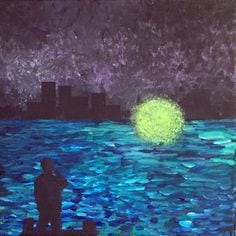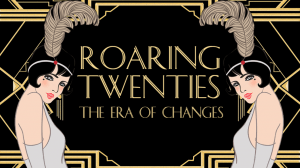A Pechakucha Presentation on The Green Light imagery and symbolism in The Great Gatsby by F. Scott Fitzgerald.
(My Free Choice)
The Green Light. A blinding symbol used to represent the epitome of the desire that Gatsby pursues throughout The Great Gatsby. Most notably explicit, it represents the reasons for his mad pursuits of Daisy across the Dock. However, implicitly, it truly represents his mad pursuit of the American Dream. Money, materials, and a lavish lifestyle were all too easy to intermingle with Gatsby’s own sexual desires of the alluring yet unreachable Daisy Buchanan. Truly, Gatsby’s constant yearning to win her over, and further, his extravagant attempts to do so prove to be much more shallow than a naive confession of love. Rather, Gatsby reaches out to embraces the green light with full trust and faith as if praying to a religion; the blinding light that is able to penetrate through the dark and an entire dock to reach him shows that even the shallow ideals surrounding The American Dream will catch him regardless of how prestigious he may be – no matter how much an individual may have, the desire for more and the mentality that nothing is ever enough will not spare said individual . The green light symbolizes the desire for wealth but it is also the colour of envy where Gatsby is cursed with jealousy toward Tom that has the only possession that he wants: Daisy. Ultimately, Fitzgerald is providing commentary on how the attitude of America in adopting the American Dream is corruptive and faulty – contrary to the common belief of it where this dream was/is glorified.
The attitude that Jay Gatsby took to pursue an untouchable Daisy Buchanan through his throwing of extravagant parties reflected the overall attitude of Americans at this time. Due to credit, there was less accountability placed on individuals from the bank; on the contrary, the banks of America wanted people to splurge and go after a materialistic lifestyle because ultimately it would benefit them because eventually, these individuals would need to pay them interest. Thus, the American attitude – at the time that this novel was set – was to pursue the American Dream especially because of the lack of consequences that would follow impulsive decision making.
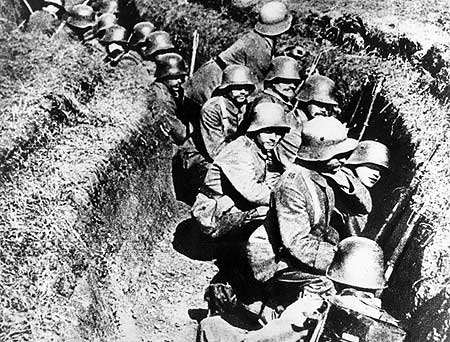
The backstory of why this time of change came about entails the results of the previous devastating World War I; this gruesome war not only took the lives of many young soldiers but also took any hope of liveliness in America – this war, notably, had been one of the longest and most violent conflicts that had ever been seen before. Thus, America was in great desperation to find any source of hope to be able to recover from the losses faced in the previous years during the war; the need to draw from Victorian values from before the war was desired again – leading to the development of the infamous “Roaring Twenties.”
During this era, men such as Gatsby and Nick, were given hope through their second chance; although they were the prime victims from the previous war as they were veterans, they could still make a name for themselves – indeed, it showed how anyone could have a fresh start and that America truly was the land of opportunity. However, even though the American Dream was glorified and followed by most everyone out of their own desires, the flickering of the green light alludes to the idea that there is some extent of faultiness in these ideals and foreshadows Gatsby’s eventual demise.
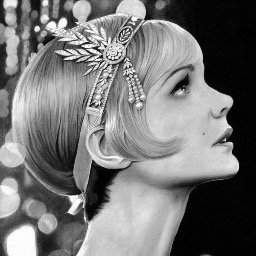
Throughout the novel, Daisy is constantly objectified in the ways that she is described: she is seen as a desirable object because of her alluring nature. Aside from her natural beauty, her voice is one of the most prevalent traps that she has to intoxicate her men – multiple times her voice is described by Nick as being her most defining feature as it is an entrancing symphony composed of notes that to Gatsby is “full of money.” Her voice is the epitome of the desiring for money and this is the very reason as to why Gatsby goes to such mad extents to pursue her: because of his own want to pursue the promise of the American Dream that entails her and the fulfillment that having her would bring him. In general, there is commentary in the novel of the role that women play in society – women act as objects that are to be used by the will of men. The pursuit of women – such as Daisy or Myrtle – by the men shows how the men are chasing their desires while the women are solely seen as inferiors that are meant to please them. Daisy further reveals this oppression that women must face when she says, ” I hope she’ll be a fool — that’s the best thing a girl can be in this world, a beautiful little fool,” in speaking about her daughter. Daisy’s quote is suggestive that women must act like fools and succumb to the dominating nature of men as this is the form in which they can trap them for their own survival.
Although Gatsby fully embraces the green light, he is unable to realize how faulty it truly is as shown through the constant flashing of it. This flickering show the instability it truly has alluding to the idea that the American Dream is corrupt and wrong. This is exemplified in the immoral actions that Gatsby himself takes to achieve his own American Dream as a bootlegger. In being a bootlegger, Gatsby’s morals must be compromised as he goes about the green light in an unethical way; yet, he calls himself a “self-made man.” However, there is some recognition on his part for how wrong his profession is when he is unable to call himself an “Oxford Man.” As well, the ways in which he pursues Daisy also show his immorality in how despite her being a married woman, he continues to pursue a life with her through the secretive nature of an affair.

Throughout the novel, Tom Buchanan is seen as an antagonistic force against Gatsby through Nick’s narration – thus, the reader assumes him to be a villainized and violent character that is at fault. However, Tom plays a much more complex role than that of a villain: he not only represents the “Old Money” or “East Egg” but he also reveals the truth to the reader about how faulty the American Dream truly is. With his infamous quote, “civilization is going to pieces,” Tom hints at the faultiness of the ideals in the Roaring ’20s. Tom represents the old noble forms of wealth as he acquired his lifestyle through the inheritance of family money and through this quote he is criticizing the new movements of America and further revealing the unethicality of men such as Gatsby. Tom represents all that Gatsby aspires to be: a man of honour and prestige with his old money but more importantly – his possession of Daisy. Thus, Gatsby tries to match and further outdo Tom by throwing his parties to show that although he is a bootlegger he can promise her more wealth than Tom ever could; even when Daisy is caught between the two, Gatsby wants her to say that she never loved him, “it was a terrible mistake, but in her heart she never loved any one except me,” Gatsby cannot accept the fact that she loved Tom at once and instead wants her to completely forget him and move on completely. This stubbornness from Gatsby parallels how America wanted to completely move on from the “old money” to adopt the mentality that anyone could be successful with hard work.

Ultimately, Gatsby underwent his own demise when he died after all his mad pursuits for Daisy and even after he died, Daisy still chose to be with Tom and not attend his funeral which truly was his downfall in how even after he took the blame for her she still chose Tom at the end. Gatsby’s demise represents how the American Dream, although glorified and followed blindly, is faulty and will lead to a tragic ending. The irony of this is that after it was published, America faced the Great Depression as a result from the growing debts of the banks and people because of the past crazed notions people had of pusruing a materialistic life; thus, showing, how true Fitzgerald predictions really were.
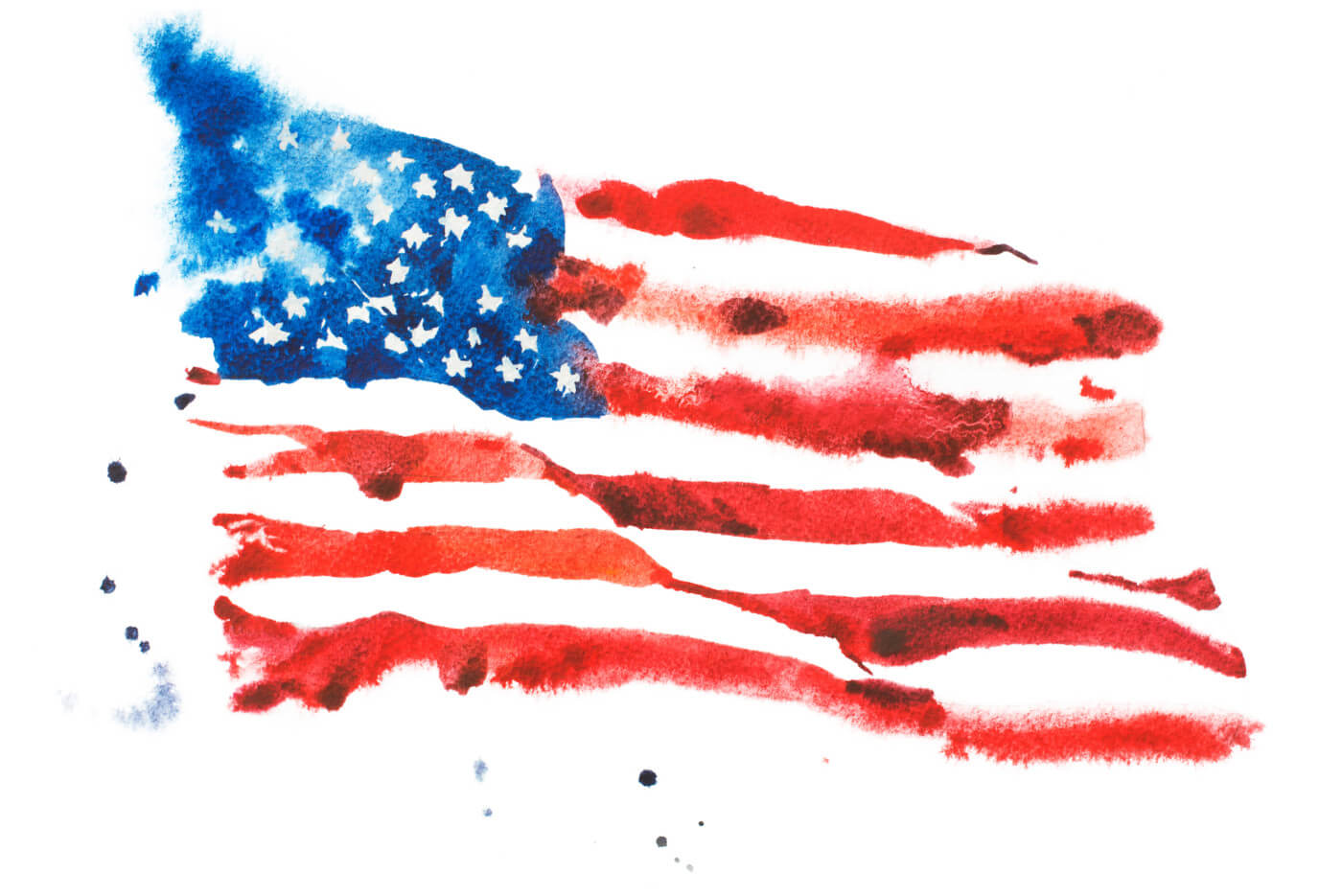
Fitzgerald’s commentary on the American Dream is shown through his novel The Great Gatsby as how it was shallow, meaningless, and overall unethical pursuit; thus, he showed a different and rare perspective on the American Dream as it was typically glorified during the Roaring Twenties. However, the American Dream is still a prevalent part of American identity in modern times as the country is still seen as a “Land of Opportunity.”
 When describing the island and dock Nick says, ” … I became aware of the old island here that flowered once for Dutch sailors’ eyes — a fresh, green breast of the New World,” he compares the green light to what the settlers must have seen in arriving in America as he describes it as a land for second chances for these people that were escaping their situations in their former countries paralleling to how Gatsby sought the green light for his own refuge from his past as soldier and a man of poverty.
When describing the island and dock Nick says, ” … I became aware of the old island here that flowered once for Dutch sailors’ eyes — a fresh, green breast of the New World,” he compares the green light to what the settlers must have seen in arriving in America as he describes it as a land for second chances for these people that were escaping their situations in their former countries paralleling to how Gatsby sought the green light for his own refuge from his past as soldier and a man of poverty.
References:


